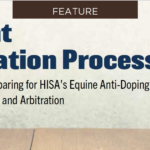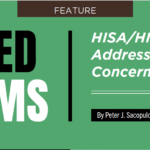From nearly the time Indiana became the 19th State in 1816, horse racing has been part of this state’s history. In fact, organized horse racing meets were held in Terre Haute as early as 1844. Throughout the 1800’s and into the early part of the 20th century, a series of small horse racing meets were sponsored by private clubs or by county fairs.
The sporadic and scattershot nature of horse racing in Indiana continued until the 1960’s when it became clear that any sustained, long term, viable racing program required embracing pari-mutuel betting. The issue of pari-mutuel wagering was placed before the Indiana voters, by way of a state wide referendum, in 1968. That referendum failed. The battle over pari-mutuel wagering continued, and, finally, in 1989, racing proponents were successful. Pari-mutuel wagering was legalized in Indiana. That same year the Indiana Horse Racing Commission was created to administer and oversee horse racing in our state.
The 1990’s was a decade of continuous activity in Indiana horse racing. In 1990 Anderson, Indiana, became the first city to apply for a license to construct a horse track. Two years later the Indiana Thoroughbred Owners and Breeders Association was formed and then one year later, in 1993, the Indiana Legislature passed the Indiana Riverboat Gaming Act. This Act provided for riverboat revenue to supplement racing purses. A year later, Hoosier Park opened for business in Anderson, Indiana. The following year, 1995, the first Indiana thoroughbred races were run at Hoosier Park and that same year the first off-track betting parlors (OTBs) opened for business in the Hoosier State.
The momentum behind Indiana horse racing continued to build over the next decade with Indiana Downs Race Track opening for business on December 6, 2002. Then in 2007, the Indiana General Assembly passed a gaming bill allowing slots at both horse racing tracks. Each track was allotted 2,000 slot machines and plans for and construction of Indiana’s two “racinos” were underway. One year later Indiana Grand Casino opened for business in Shelbyville, Indiana, and Hoosier Park Racing and Casino followed. By 2010, Indiana’s premier thoroughbred race, the Indiana Derby, was awarded Grade 2 status and offered a $500,000.00 purse. Slot money fueled a strong racing program and development programs for standardbred, quarter horses and thoroughbreds and contributed considerable sums to enhance purse money and breeding/owner incentives.
Last year, 2012, Centaur LLC, the entity that owns and operates Hoosier Park Racing and Casino, announced its interest to acquire Indiana Downs that is owned by Indianapolis Downs, LLC. Indiana Downs and Indiana Grand Casino had filed for and been awarded bankruptcy protection. Centaur LLC submitted a proposal/bid to purchase Indiana Downs and Indiana Grand Casino for the sum of $500,000,000.00 plus $1.00 together with the assumption of Indiana Grand’s liabilities. On November 1, 2012, a federal bankruptcy judge in the State of Delaware approved the proposed purchase agreement. However, Delaware Federal Bankruptcy Judge Shannon’s ruling was only the first step. In addition to the Federal Bankruptcy Court approving Centaur LLC’s offer, approval was also required from the Indiana Horse Racing Commission, the Indiana Gaming Commission, and Federal Trade Commission.
In December of last year, Centaur solicited the support and approval of the Indiana Horseman. The three breed groups: the standardbred owners, represented by the Indiana Standardbred Association; the quarter horse owners, represented by the Quarter Horse Racing Association of Indiana; and the thoroughbred owners represented by the Horseman’s Benevolent Protective Association (HBPA) and the Indiana Thoroughbred Owners and Breeders Association (ITOBA) all gave approval. On December 14, 2012, the issue of Centaur LLC acquiring Indiana Downs and Indiana Grand Casino was presented to the Indiana Horse Racing Commission. The Indiana Horse Racing Commission, which is comprised of five members, all of whom are appointed by the Governor of the State of Indiana, approved the proposed acquisition. Then, on the 10th of last month, the issue was presented to and approved by the Indiana Gaming Commission. It should also be noted that in 2011 the Indiana General Assembly passed legislation allowing one entity to hold multiple gaming licenses within the State of Indiana. Legislative authority was also necessary, in addition to the approval of the Indiana Horseman, the Indiana Horse Racing Commission, the Indiana Gaming Commission, and the Federal Trade Commission.
Most recently Centaur LLC submitted an application to the Federal Trade Commission, the final step to state and federal approval. The FTC had a statutory period to act on Centaur’s application. The time expired without FTC acting thereby resulting in approval. As such, Indiana’s “two racinos” will be owned by one entity, Centaur, LLC.
There are several significant advantages for Indiana horsemen, including owners and trainers, as well as those who work on the “backside” of the tracks including grooms, hot walkers and others if Centaur LLC were to own both of Indiana’s race tracks. The first advantage relates to the same breed/same track proposal whereby all future thoroughbred and quarter horse racing would take place at Indiana Downs in Shelbyville, Indiana, and all future standardbred racing would take place at Hoosier Park in Anderson, Indiana. The one breed/one track program would eliminate the present dual meet arrangement whereby the thoroughbred and quarter horses begin racing in April at Indiana Downs and then conclude live Indiana racing with a second meet at Hoosier Park beginning in August. The schedule for standardbred racing is the mirror opposite. Standardbred racing begins with a spring meet at Hoosier Park and concludes with a second meet at Shelbyville beginning in late summer. This do-si-do results in considerable costs in changing and reconfiguring of track surfaces for the different breeds as well as expense for the horsemen. Nearly 700 thoroughbred and quarter horses are loaded and trailered the approximate 50 miles from Shelbyville to Anderson each summer and an additional 500 plus standardbred horses pass the thoroughbred and quarter horses going south from Anderson to Shelbyville each year. Additionally, those working in the horse racing industry in Indiana will be more likely to invest in a community where all of their racing will occur.
From a gaming perspective, Centaur LLC’s ownership of Indiana’s two racinos also makes sense. Joint marketing and promotion, better and more incentives and perks for Indiana’s high and low rollers and the development of Indiana’s racinos into broader venues offering more significant and diverse entertainment are some of the reasons. Additionally, the one breed/one track program will likely result in increased “handle”, that being the total amount wagered resulting in more funds for infrastructure and aesthetic improvements for the communities of Anderson and Shelbyville, Indiana.
The 2013 live racing season in Indiana is only weeks away. It will see, for the first time, all quarter horse and thoroughbred racing run in Shelbyville, Indiana and all standardbred racing run at Hoosier Park in Anderson, Indiana. Indiana’s racing program , and Centaur’s one breed/one track approach will provide for an exciting season of live racing this year in Indiana.
Author:
Peter J. Sacopulos, Esq., is a partner in the law firm of Sacopulos, Johnson & Sacopulos. He is a member and past president of the Terre Haute Bar Association, the Indiana Bar Association, and serves on the Board of the Indiana Thoroughbred Owners and Breeders Association. Mr. Sacopulos has written extensively on equine law issues in numerous publications. In May 2011, he presented at the National Equine Law Seminar in Lexington, Kentucky. In August 2012, he presented at the Saratoga Institute on Racing and Gaming Law. Mr. Sacopulos received a B.A., cum laude, from Tulane University and a J.D. from Indiana University School of Law-Indianapolis.





